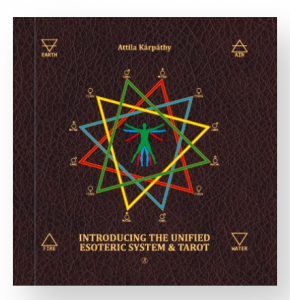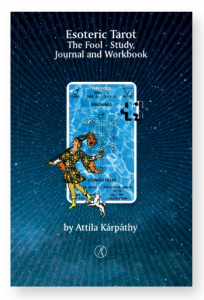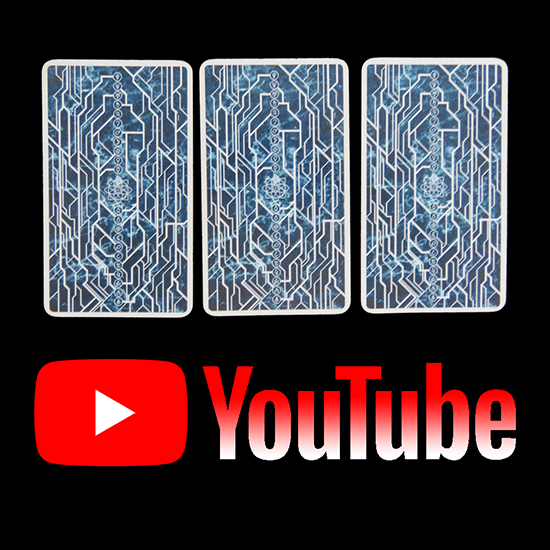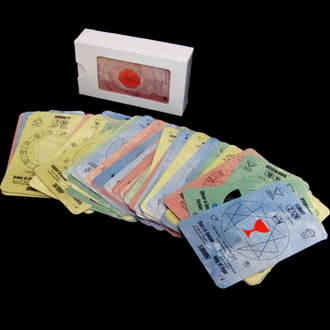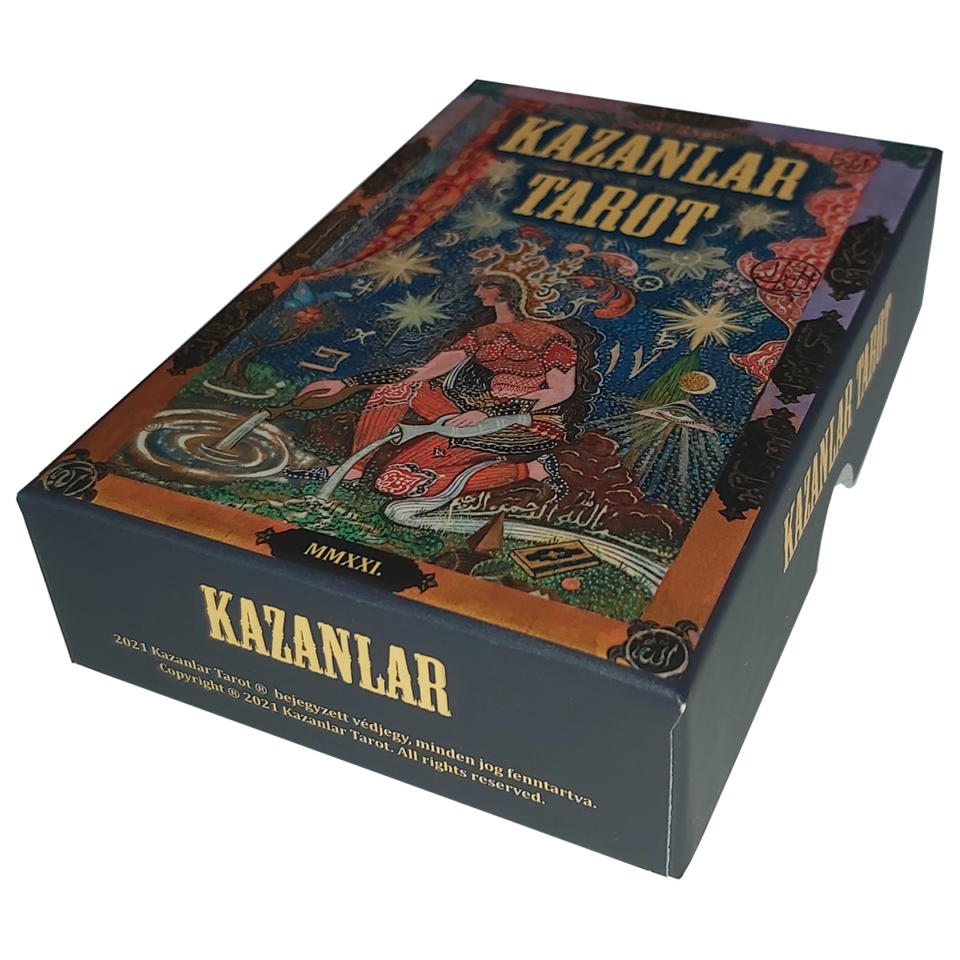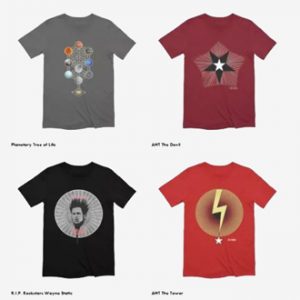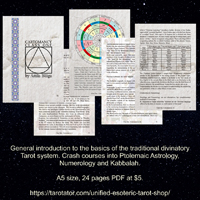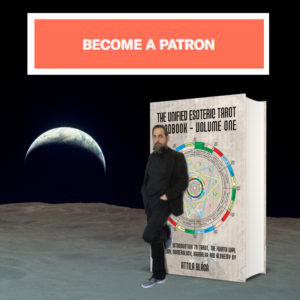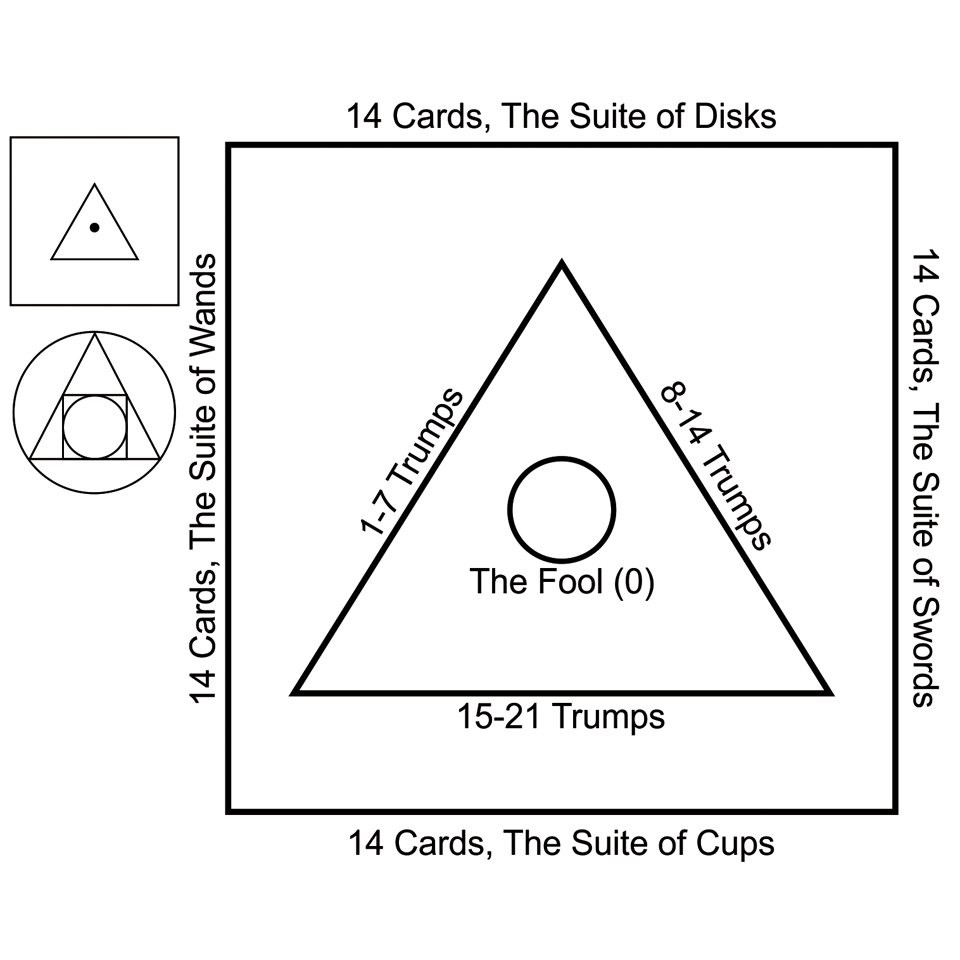
In 1913 P.D. Ouspensky wrote an essay about the Tarot deck entitled “The Symbolism of the Tarot.”
According to Ouspensky, the cards of the Tarot deck are divided into three parts.
Twenty-one numbered cards, one card numbered as zero, and the third part has fifty-six cards, respectively four suits of fourteen cards each. Ouspensky stated:
“The second part appears to be a link between the first and third parts since all the fifty-six cards of the third part together are equal to the card 0.”
More interestingly he explains that “if we imagine twenty-one cards disposed in the shape of a triangle, seven cards on each side, a point in the centre of the triangle represented by the zero card, and a square around the triangle (the square consisting of fifty-six cards, fourteen on each side), we shall have a representation of the relation between God, Man and the Universe, or the relation between the world of ideas, the consciousness of man and the physical world.
0 or 78 (or both) – The Fool.
1-7 – The first order of 7 Trumps.
8-14 – The second order of 7 Trumps.
15-21 – The third order of 7 Trumps.
22-35 – The suite of the Wands, 14 cards, respectively 2×7.
36-49 – The suite of the Cups, 14 cards, respectively 2×7.
50-63 – The suits of the Swords, 14 cards, respectively 2×7.
64-77 – The suits of the Disks, 14 cards, respectively 2×7.
The triangle is God (the Trinity) or the world of ideas, or the noumenal world. The point is man’s soul. The square is the visible, physical or phenomenal world.
Potentially, the point is equal to the square, which means that all the visible world is contained in man’s consciousness, is created in man’s soul. And the soul itself is a point having no dimension in the world of the spirit, symbolised by the triangle.”
Regarding the square and the triangle, respectively the Law of Four and the Law of Three, Ouspensky received further guidance from Gurdjieff.
“The Tarot is definitely constructed upon the law of four principles. Until now Gurdjieff had spoken only of the law of three principles. But now I saw how three passed into four and understood the necessity for this division so long as the division of force and matter exists for our immediate observation. “Three” referred to force and “four” referred to matter.”
The book included a rudimentary drawing with a square, inside the square a smaller triangle and in the middle of the triangle with a point.
The image from the book reminded me of the classic representation of the Philosopher’s Stone: a circle inside a square surrounded by a triangle inside another circle. I made my own drawing.
(Excerpt from the book “The Unified Esoteric Tarot Handbook – Volume One, A general introduction to Tarot, The Fourth Way, Astrology, Numerology, Kabbalah and Alchemy” by Attila Blága. Full or partial use of this text for commercial or non-commercial distribution by any means whatsoever is strictly prohibited unless expressly authorised by the author.)


